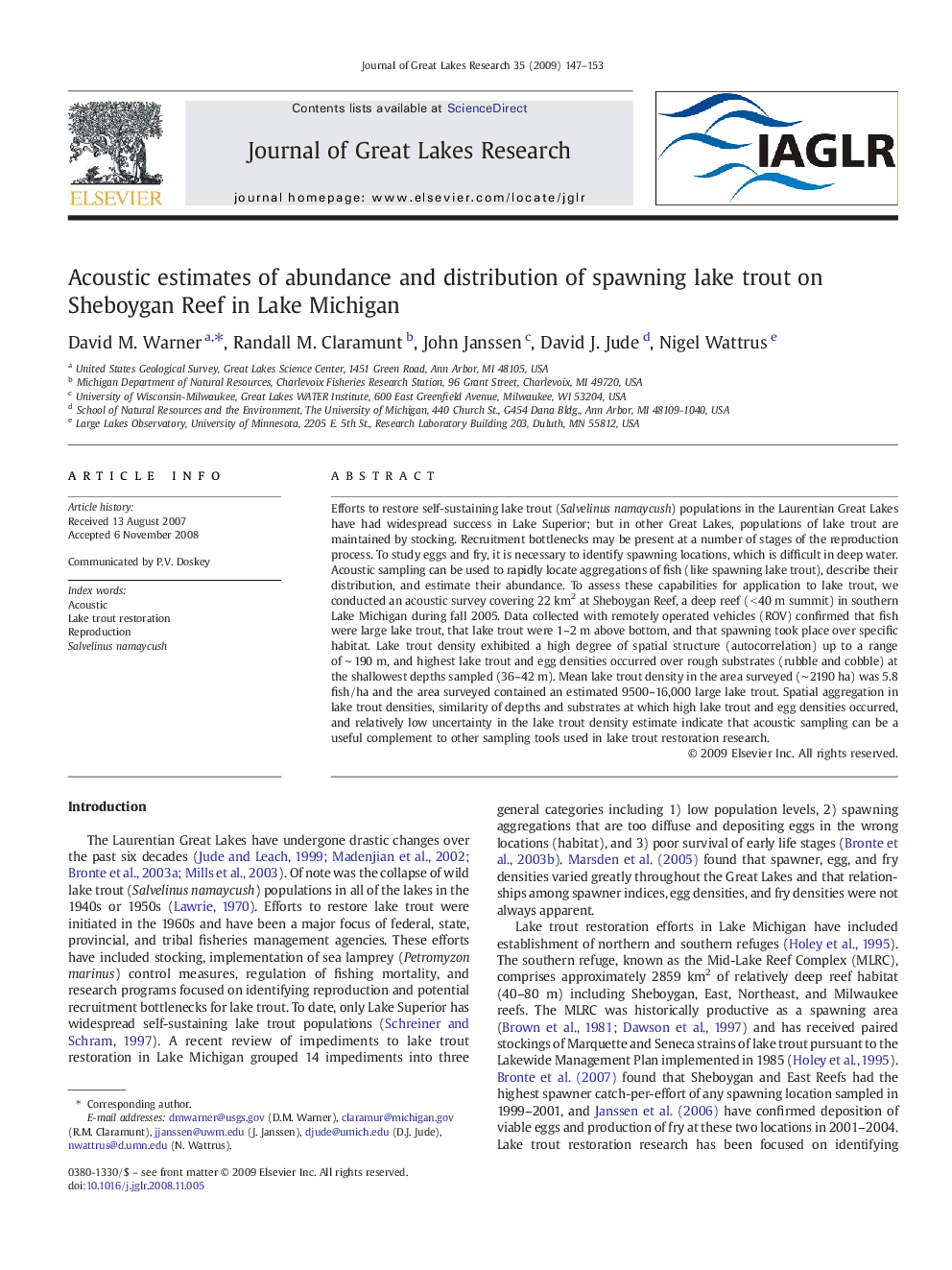| Article ID | Journal | Published Year | Pages | File Type |
|---|---|---|---|---|
| 4399257 | Journal of Great Lakes Research | 2009 | 7 Pages |
Abstract
Efforts to restore self-sustaining lake trout (Salvelinus namaycush) populations in the Laurentian Great Lakes have had widespread success in Lake Superior; but in other Great Lakes, populations of lake trout are maintained by stocking. Recruitment bottlenecks may be present at a number of stages of the reproduction process. To study eggs and fry, it is necessary to identify spawning locations, which is difficult in deep water. Acoustic sampling can be used to rapidly locate aggregations of fish (like spawning lake trout), describe their distribution, and estimate their abundance. To assess these capabilities for application to lake trout, we conducted an acoustic survey covering 22 km2 at Sheboygan Reef, a deep reef ( < 40 m summit) in southern Lake Michigan during fall 2005. Data collected with remotely operated vehicles (ROV) confirmed that fish were large lake trout, that lake trout were 1-2 m above bottom, and that spawning took place over specific habitat. Lake trout density exhibited a high degree of spatial structure (autocorrelation) up to a range of â¼Â 190 m, and highest lake trout and egg densities occurred over rough substrates (rubble and cobble) at the shallowest depths sampled (36-42 m). Mean lake trout density in the area surveyed (â¼Â 2190 ha) was 5.8 fish/ha and the area surveyed contained an estimated 9500-16,000 large lake trout. Spatial aggregation in lake trout densities, similarity of depths and substrates at which high lake trout and egg densities occurred, and relatively low uncertainty in the lake trout density estimate indicate that acoustic sampling can be a useful complement to other sampling tools used in lake trout restoration research.
Related Topics
Physical Sciences and Engineering
Earth and Planetary Sciences
Earth and Planetary Sciences (General)
Authors
David M. Warner, Randall M. Claramunt, John Janssen, David J. Jude, Nigel Wattrus,
